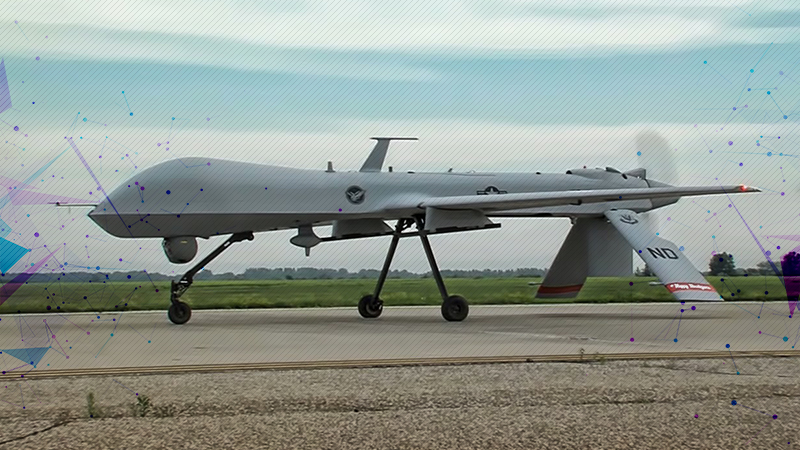Drones have quickly developed into a technological marvel that is deployed in a wide range of applications. What began as hot air balloons used for military surveillance has developed into an incredible technological achievement that is used for the benefit of mankind. Today, drones are employed all over the world for a variety of purposes, including disease prevention, delivery services, insurance, mapping, and wildlife conservation.
The special capabilities of drones and their capacity to carry goods or gather information securely in difficult places open up a completely new range of applications for drone technology.
Today’s drones equipped with machine learning technologies may execute surveillance missions and border monitoring in addition to precisely mapping natural features due to advances in technology. Modern day drones are also increasingly utilized to keep an eye on ecologically vulnerable areas and prevent trespassing by people.
What is the Drone Story?
Drones, including radio-controlled versions, were utilized by military organizations in the early 1900s for target practice. Additionally, engineers created unmanned planes that were armed with weapons. In reality, these weren’t drones. They were the first cruise missiles, sometimes known as flying torpedoes, that weren’t designed to land back at their launching base.
Also Read: Emirates Expands its Cargo Fleet With Five Boeing 777 Freighters
The U.S. increased drone development during the Cold War in an effort to replace manned espionage planes. Around the same time, developers started developing drones with the ability to conduct real-time surveillance. These drones may reach enemy lines and record troop movements and strategies without endangering human life using their mounted cameras and boundless bravery.
The CIA executed its enemy combatant in Afghanistan in 2002 using a MQ-1 Predator drone for the first time outfitted with an AGM-114 Hellfire missile. It was introduced in 1995 and has since flown over the globe, although it is primarily used in the Middle East.
Drones have become increasingly effective for military operations as the digital revolution has progressed due to small microprocessors and long-distance networking capabilities.
Civilian and commercial drone use is highly constrained by aviation administration laws in several countries, including the US, mostly for safety reasons. However, this does not stop thousands of individuals from employing drones for a wide range of tasks, such as crop monitoring, sheep herding, filming, and product delivery.
What’s New With Drones Today?

It is difficult to argue against the benefits of drones, which has accelerated the adoption of UAV technology in some of the most important economic areas. Despite the fact that some drone applications, like airborne delivery, are still in their infancy, other uses for drones are becoming increasingly commonplace.
Several uses for these airborne technologies are highlighted via an examination of six sectors using drone technology. Additionally, the diverse range of industries demonstrates the adaptability of UAVs in general. They demonstrate how almost all industries may profit from drones.
Conservation/Research
Drones have a big impact on the academic and conservation communities, from studying animals to regenerating forests destroyed by wildfires. UAVs make it possible to examine ecosystems safely and from a distance. Before drones, projects like gathering materials from whale blowholes would have been impossible, but now they are common and simple tasks.
Drones with a variety of payloads are adaptable enough to be used for a wide range of conservation and research purposes. Drones are a force multiplier, whether LiDAR is revealing the size of Mayan towns buried in the jungle, multi-spectral cameras are examining damaged trees, or drones are taking pictures of erupting volcanoes.
Military
The fact that militaries all across the world have been employing drones for decades should not be surprising. Both the destructive capabilities of UAV technology and its intelligence collecting capabilities have been advantageous to military personnel. The landscape of warfare is changing as a result of real-time situational awareness and keeping soldiers out of harm’s reach.
The military has recently recognized the advantages of tiny UAVs. Initiatives like the Blue sUAS project of the Defense Institute Unit make use of the design and know-how of industrial producers to give the warfighter more power than ever. Small ground forces now have access to surveillance and communication capabilities that were previously only available to high-level operations thanks to drones.
Oil & Gas
Pipelines are a major issue in the oil and gas sector. The lines can be found in terrain that is difficult to access, if not impassable, for hundreds of miles. Even underground pipe lines exist making maintenance considerably a difficult process.
Therefore drones are equipped with payloads that may detect gas leaks and can notify crews of other crises, including a ruptured pipeline. UAVs are used to cover more land than a group of people could and to avert potential natural and man-made calamities.
Construction
One of the first sectors to recognize the full potential of drone technology is the construction sector. It was soon demonstrated through the deployment of drones in a range of applications within this business that UAVs may save costs, enhance project management, and lessen the frequency of safety accidents.
Drones are a great resource for monitoring the development of construction projects. They can send project planners real-time video feeds, giving them more control over keeping construction projects on schedule and within budget.
Other uses include 3D mapping with survey-level accuracy, asset monitoring, inspections of finished sections, and volumetric computations of inventories.




